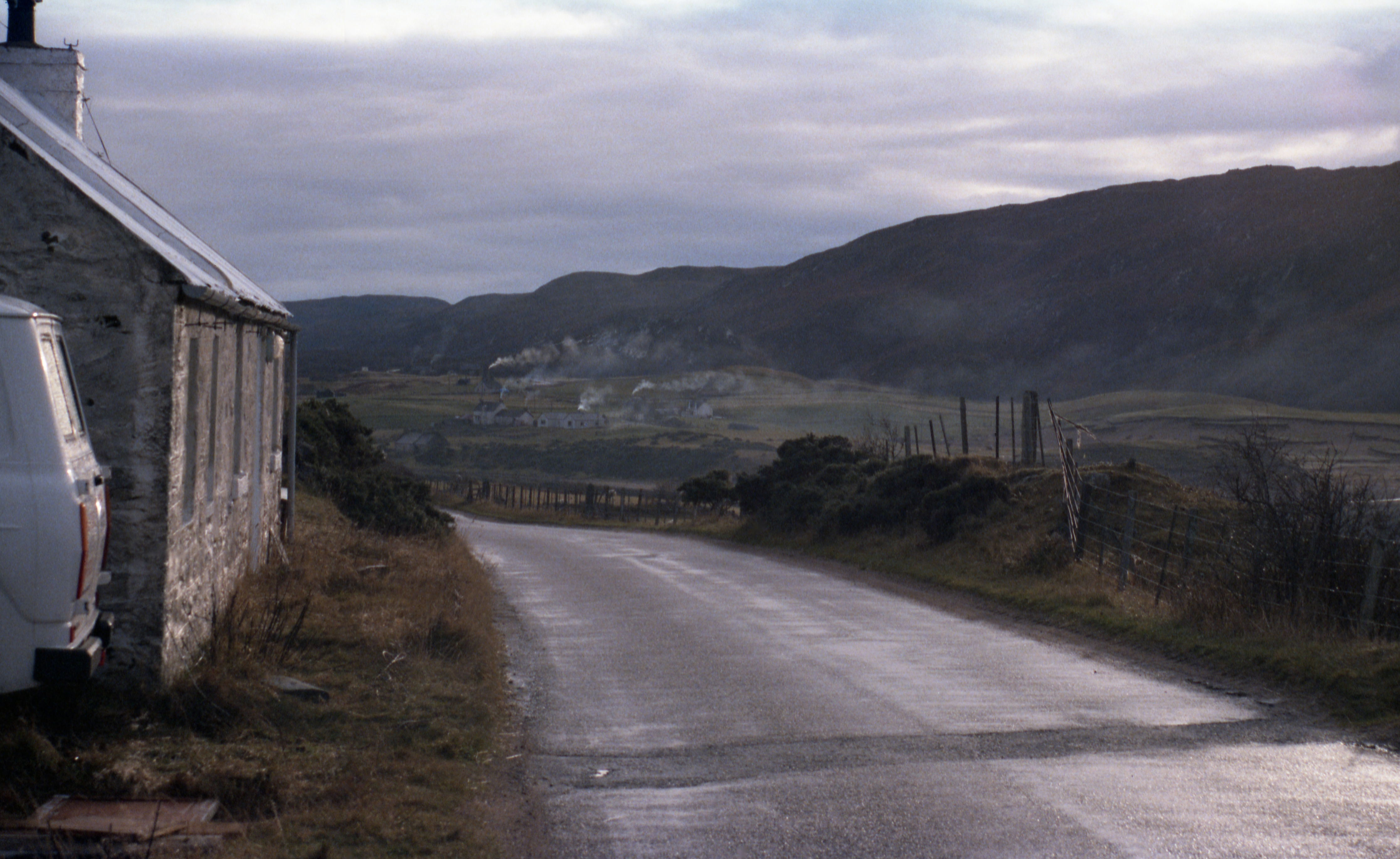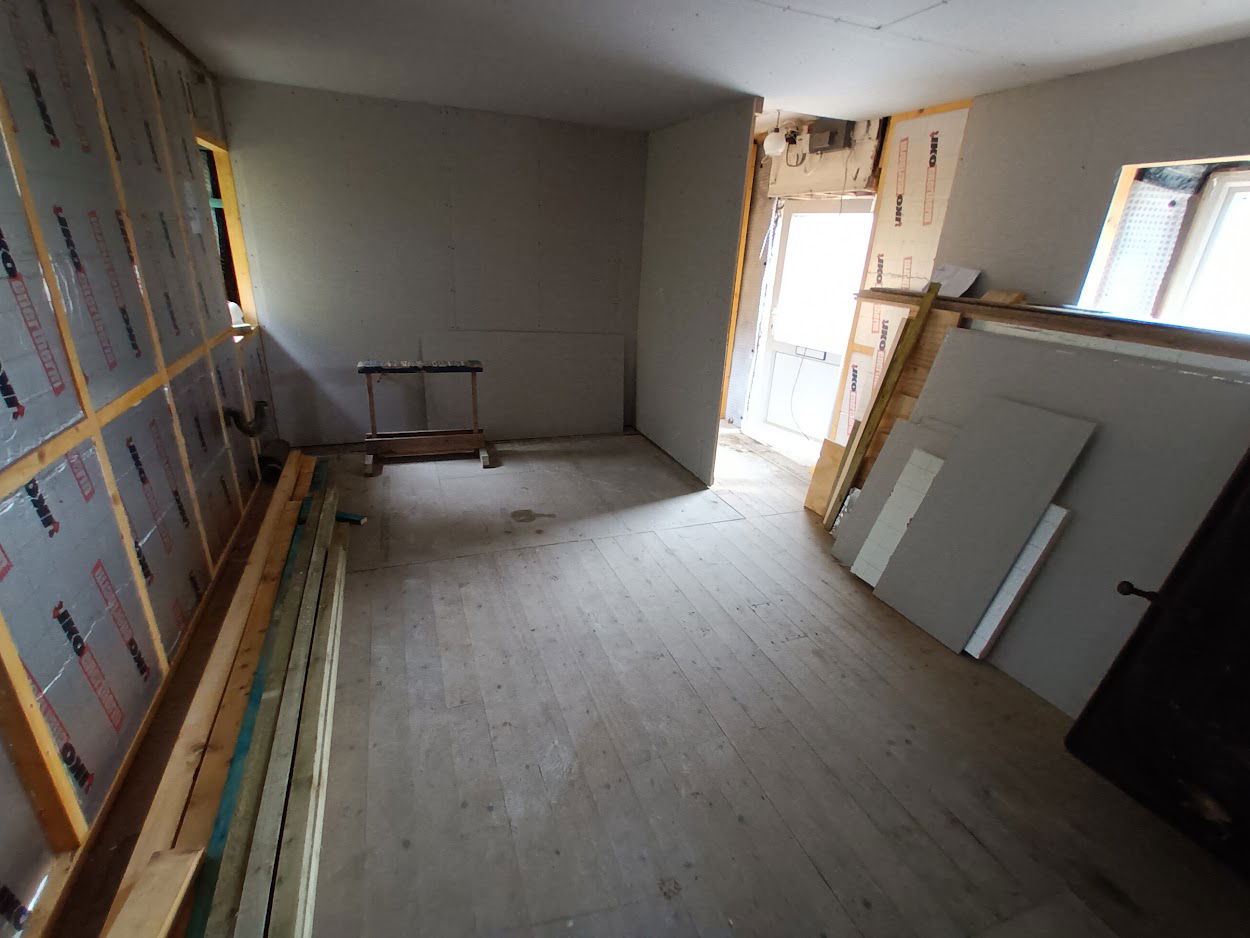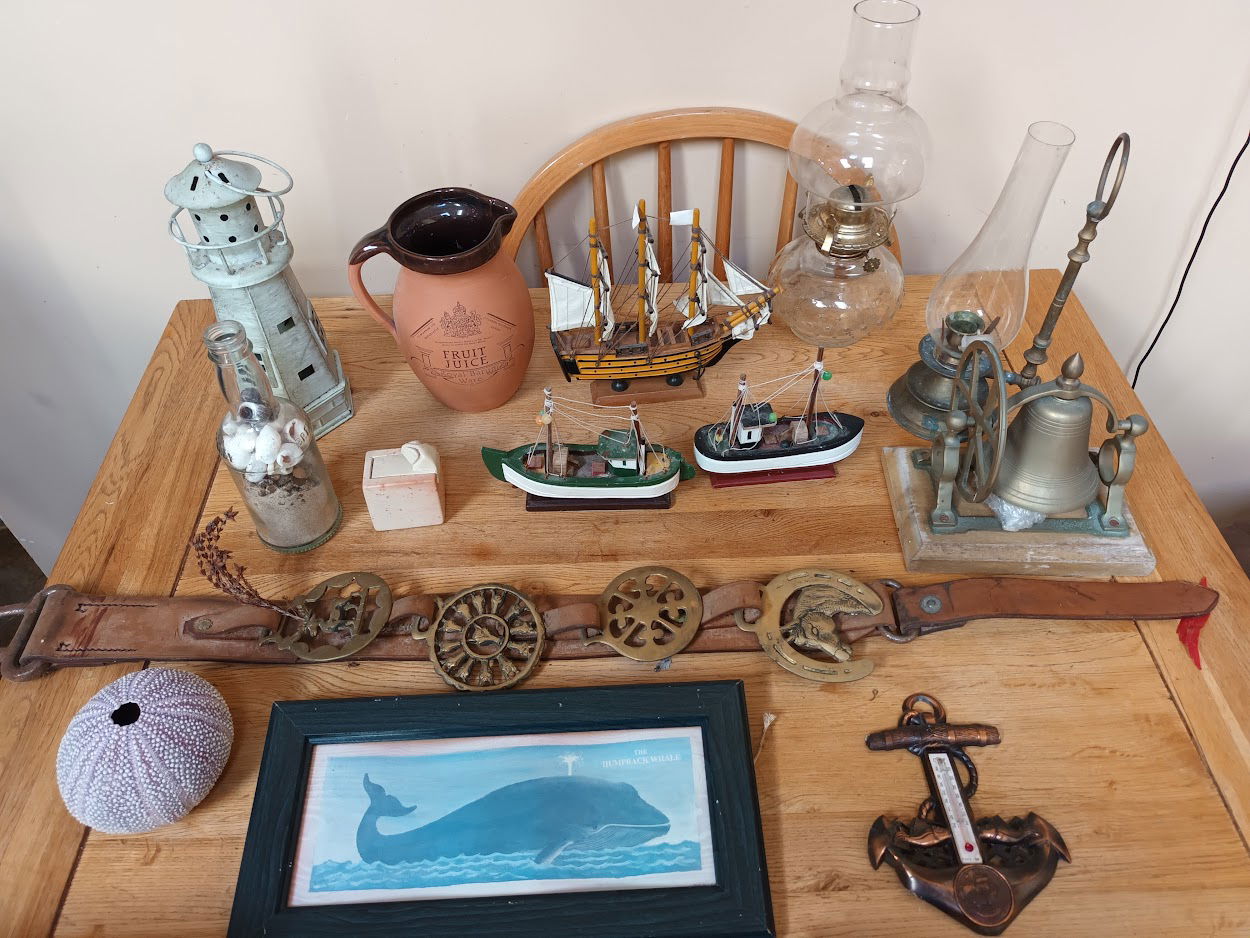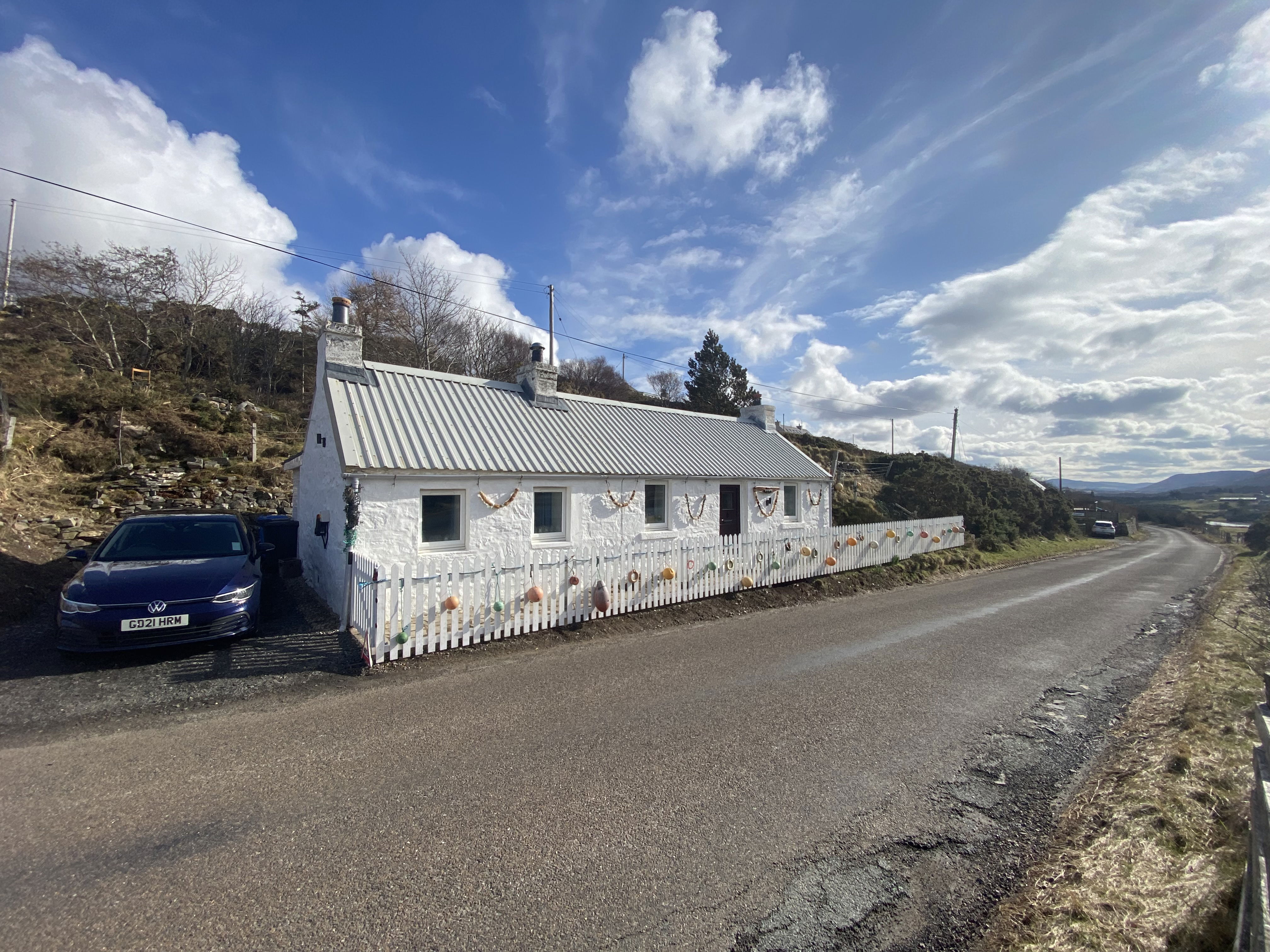
If anyone ever asked my husband about the story behind The Captains, he would tell them that some time ago, in the history of this Victorian era crofters’ cottage, there lived a man called Angus and his wife. Angus was a ghillie, a servant or attendant on fishing expeditions, and he owned a small rowing boat that he used for these trips on the River Naver. To tease him, despite his lowly position, the other locals used to call him Captain Angus, and later his wife became known as Mrs Captain, and henceforth, their cottage was known as The Captains.
It has long been said that truth should not get in the way of a good story, and this is an excellent story, possibly with no truth behind it! Certainly, the deeds to the cottage only go back as far as 1922 and it is referred to as “House known as Cottage at Achina, Bettyhill” even as recently as 1973, and only as The Captains in 1983 when my husband bought it, with his first wife, Val.
They had been coming to Sutherland since the early 70s and my husband, Steve, had spent weeks carrying out fieldwork in the area to obtain his PhD in Geology. After that, both of them, trained geologists, came up every year to do further geological research, and, indeed, they wrote and published several scientific papers on what they found out.
By 1983, they were both lecturers in Geology at Hatfield Polytechnic (later to become the University of Hertfordshire), and, having purchased The Captains, they used it as a base when they brought students up on field trips, with the students being accommodated at the Farr Bay Inn.

Geologists are a merry bunch and the field trips brought useful out of season business into Bettyhill, particularly to the Farr Bay Inn, and Steve and Val, and their students enjoyed a yarn and a dram in the bar with the regular locals.

It is perhaps from this older generation, the likes of Jock, Hughie, Hamish and Gladys, that the story of The Captains got handed down. Indeed, Mrs Pfeiffer, an old lady by this time, recalled being sent to stay with Mrs Captain as a small girl to keep her company after her husband died.

The Captains itself has evolved over time. At first, it was a two roomed stone building, comprising a living room on the right and a kitchen on the left. Between the two rooms was a “box bed”, a completely enclosed wooden bed that could be accessed via a door in the panelling and closed up at night to keep in the warmth. Any children living there would have been scooted up a ladder into the loft space to sleep. Next to the cottage was a cattle shed, also built of the same thick stone walls. At some point in its history, the door to the cattle shed was closed up to make a window and a new internal door between the cottage and shed was opened up, making a new room to the cottage on the left of the kitchen. The old dirt floor was covered up with floorboards and it was necessary to step up into this room. Another alteration that happened was the removal of the box bed, and the creation of a kitchen in its stead. It is likely that this happened in the 1950s, given the wiring that was present in the kitchen.

The owners of the cottage before Steve and Val, were said to have been a couple of sisters from Edinburgh, who used it as a holiday cottage. They had the righthand room set up as living room and the middle room as a bedroom, with the tiny kitchen in between. The old cattle shed room was mostly used as a storage room for furniture and similar, and they had the bathroom at the back added, although they could never have used it as it wasn’t fully plumbed in. Eventually, the sickly sister died and at that point her sister stopped coming up on holiday and put the cottage on the market.

Being seldom used for several years and stacked up with old furniture, The Captains was in need of considerable attention when Steve and Val took it on. So over the next few years, they spent their summers there, knocking the place into shape, bringing the bathroom into use, modernising the kitchen, fixing the leaking roof, landscaping the hillside that surrounded the cottage and putting in a front path and fence.

When they had their children in 1986 and 1988, the cottage was used both as a base for the field trips in April and September, and family holidays in July and August. And then, in the early 2000s, for family holidays with our children, although as Steve became older, it was harder and harder for him to keep up the maintenance. The cottage needed a new roof in 2009, and double-glazing and a new door was added at this time too.

By the time Steve died in 2022, the cottage was once again suffering from spending months empty each winter, and the modernisations Steve and Val had carried out in the 1980s were looking far from modern anymore. The Captains had always been Steve’s favourite place in the world and was very much on his mind during his last days and he asked me to see what I could do to bring it back to life and to make it available as a holiday let so that others could enjoy it as much as he always had.

During 2023, The Captains underwent a complete renovation, removing the partition to open up the kitchen and knocking through a new doorway to change the access to the bathroom to be from the lounge rather than through the bedroom. It was tanked to stop damp seeping through the stone walls, insulated, rewired and replumbed.

All the nautical trinkets and beach-combing treasures from 40 years of family holidays were removed, cleaned and carefully considered before the final dressing, returning the character of the cottage back to the modern specifications.

Over the 40 years that The Captains has been a family holiday cottage, Bettyhill has remained largely unchanged. The views from the property are consistently outstanding, and there is nothing better than being able to let children run free on a beach without losing them in a crowd.

However, with the creation of the NC500 route, there has been an increase in tourists to the whole of the North Coast of Scotland, which is slowly dragging the farming community into the tourist industry. With this has come the benefits of more local amenities, whilst the area still remains one of the least crowded and untouched tourist destinations in the country, allowing visitors to shift down a gear, chill out and recharge. And after years of standing solidly on this remote hillside, The Captains has once again been kept from ruin, and remains to delight future visitors, new and old, to this special place.
